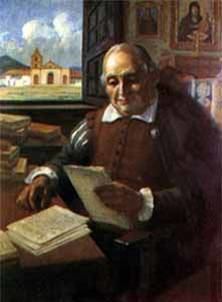 | ||
Colombian literature, as an expression of the culture of Colombia, is heterogeneous due to the coexistence of Spanish, African and Native American heritages in an extremely diverse geography. Five distinct historical and cultural traditions can be identified, with their own socioeconomic history: the Caribbean coast, Greater Antioquia, the Cundinamarca-Boyacá Highlands, Greater Tolima and the Western Valley.
Contents
Conquest and early colonial period (1499-1810)
Under the Spanish Empire, major literary topics included conquest narratives, chronicles, religious devotion, and love themes. Some of the best-known authors of this period are:
Emancipation and national consolidation (1780-1830)
During the process of independence, Colombian literature was strongly influenced by the political motivations of the moment. The main literary movements were close to Romanticism.
During the nineteenth century, political writing was led by Simón Bolívar. Local journalism was initiated by Antonio Nariño. The Colombian government established the first Academy of Spanish language in the American continent, in 1871.
Other relevant authors were:
Costumbrismo
In the late nineteenth and early twentieth centuries, the main topic in Colombian literature was the colourful depiction of peasant life, tied to strong criticism of society and government. This type of literature was called costumbrista literature. Some of the authors of this period are:
Modern literature
Modernismo and modernism are reactions against the previous literature of Romanticism. Modernism's main topics are ugliness and mystery. The main modern writers are:
Stone and Sky (Piedra y Cielo)
The industrialization process in Latin America during the twentieth century generated new literary movements such as the poetic movement named “Piedra y cielo” (1939). Its main authors are:
Nothing-ism (Nadaísmo)
The violent events in Colombia during the 1940s and 1950s, such as La Violencia and the military government of Gustavo Rojas Pinilla, as well as a considerable urban expansion, influenced in the formation of the Nadaísta (Nothing-ist) movement, which was the Colombian expression of numerous avant-garde-like movements in the poetry of the Americas during the 1950s and 60s (such as the *Beat Generation in the United States and the Tzanticos in Ecuador). Nadaísmo included elements of existentialism and nihilism, a dynamic incorporation of city life, and a generally irreverent, iconoclastic flavor. Authors who were part of this movement include:
The Boom
The Latin American Boom was a prolific period for Colombian literature.
Disillusioned Generation / Generación Desencantada
This generation groups a broad and ambiguous list of writers, poets who began to publish after the Nadaísmo movement (see above) in the 1970s. Poets like Giovanni Quessep, Harold Alvarado Tenorio, Juan Gustavo Cobo Borda, Elkin Restrepo, José Manuel Arango, Darío Jaramillo Agudelo, Augusto Pinilla, María Mercedes Carranza, and Juan Manuel Roca among many others, have been considered part of this generation, although they have differences in style, themes and ideology.
Recent generations
Some writers like Cristian Valencia, Alberto Salcedo Ramos and Jorge Enrique Botero, have written literary journalism, close to Gonzo style. In fiction there are authors like Hector Abad Faciolince, Santiago Gamboa, Juan Sebastian Cardenas, Nahum Montt, Miguel Mendoza Luna, Sebastian Pineda Buitrago, Mauricio Loza, Ignacio Arroyave Piedrhíta, Antonio Garcia, Mario Mendoza, James Canon, Ricardo Abdahllah, Juan Pablo Plata, Evelio Rosero Diago, Antonio Ungar, Laura Restrepo, Ruben Varona, William Ospina, David Alberto Campos, Oscar Perdomo Gamboa, Juan Esteban Constain, Juan Álvarez, Andrés Del Castillo, Antonio Iriarte, Esmir Garcés, Antonieta Villamil, Winston Morales, Efraim Medina Reyes, Ricardo Silva Romero and many others.
Recent poetry
In recent decades, in Colombia there has been a significant number of poets of importance, who deal with urban issues and anti-poetry. Among them are Antonieta Villamil, Andrea Cote, Lucia Estrada, Felipe García Quintero, whose poetry has been recognized internationally.
Poetry
Children's literature
Some of the characters most recognized in Colombian children's literature and the popular imaginary are the stock characters created by Rafael Pombo, which are often found in nursery rhymes, familiar folk tales and in the textbooks for elementary school.
Other important children literature authors are:
